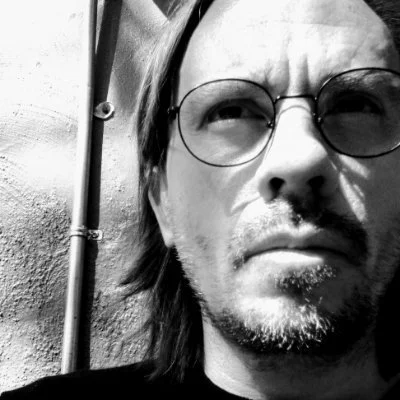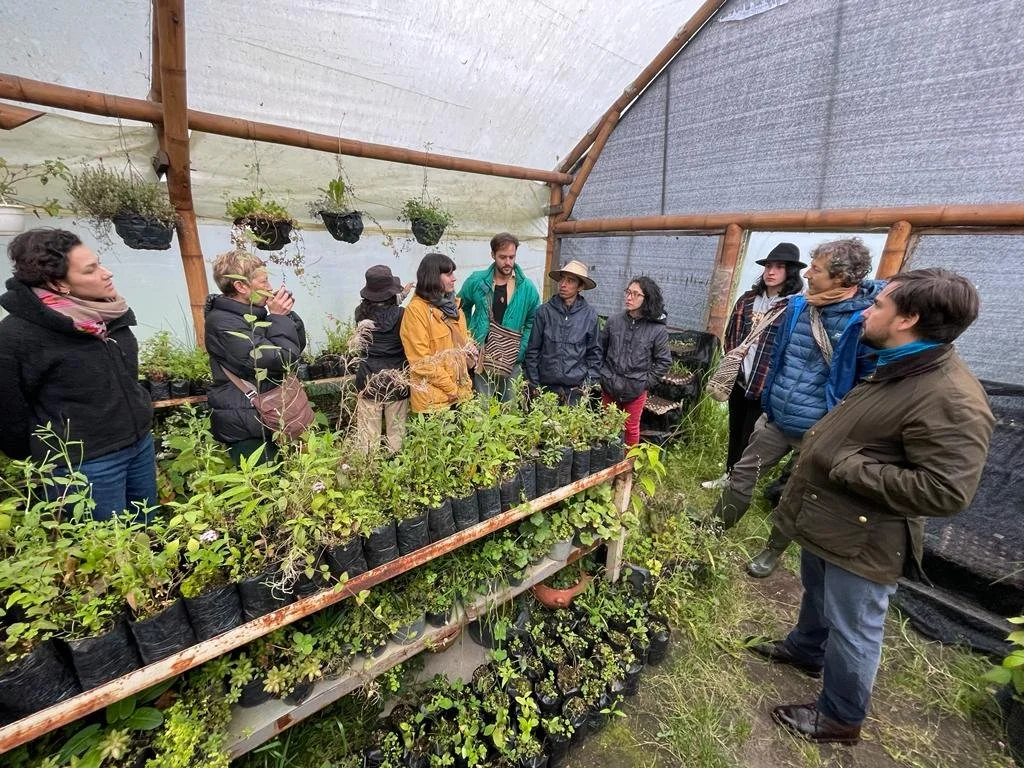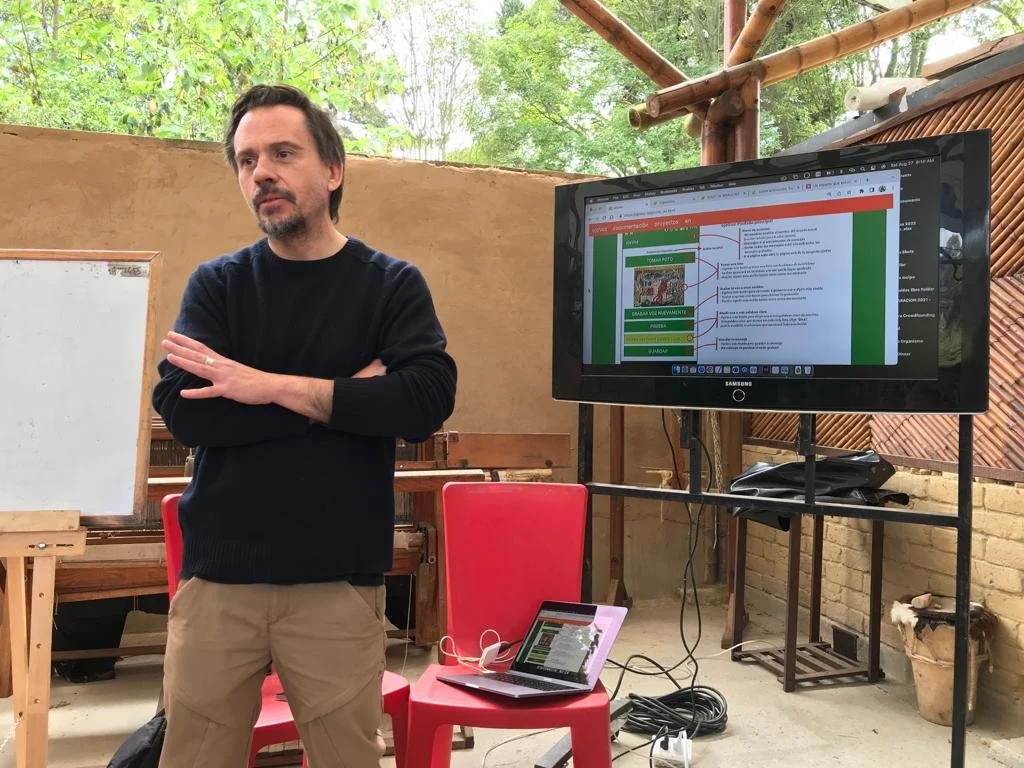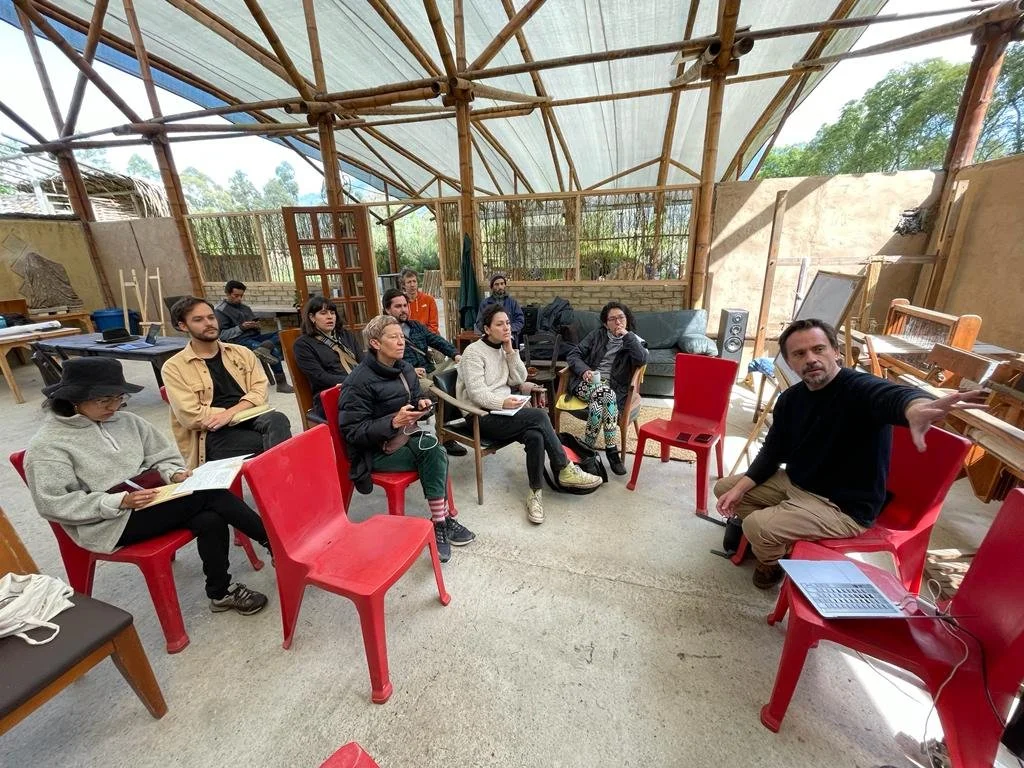NUEVAS ESCUELAS DE PENSAMIENTO Y REGENERACIÓN
Regeneración en biología es el proceso por el que se recupera la estructura y la función de sistemas vivos que han sido alterados de su estado natural de balance. Es la capacidad de adaptabilidad y resiliencia inherente a todas las formas de vida.
Queremos visitar distintas realidades que abrazan en sus recorridos la puesta en marcha de manifiestos en miras al desarrollo de una sociedad que co-habita como un ecosistema vivo en capacitad de restaurarse.
Recibiendo la situación actual como una invitación a observar cuidadosamente los modelos obsoletos, nos encontramos en el momento de proponer nuevas realidades en miras a la autogestión y el auto abastecimiento sostenible para generar conocimientos que parten del dialogo y el intercambio de saberes.
·
NEW SCHOOLS OF THOUGHT AND REGENERATION
Regeneration in biology is the process by which the structure and function of living systems that have been altered from their natural state of balance is recovered. It is the capacity for adaptability and resilience inherent in all forms of life.
We want to visit different realities that embrace in their journeys the implementation of manifestos in view of the development of a society that co-inhabits as a living ecosystem capable of restoring itself.
Receiving the current situation as an invitation to carefully observe the obsolete models, we find ourselves at the moment of proposing new realities in view of self-management and sustainable self-supply in order to generate knowledge based on dialogue and exchange of knowledge.
SCHOOL OF SCHOOLS
Primer encuentro de la Cohorte internacional 2024 RE:arc Institute
Del 26 de Febrero al 1 de Marzo de 2024 recibimos el encuentro School of Schools que reunió a la cohorte de proyectos 2023- 2025 del grant de re:arc institute. Esta fue una semana para compartir espacios de diálogo, rituales de fuego y realizar algunos recorridos por la sabana de Bogotá. A lo largo de la semana escuchamos varias de las líneas de interés de los miembros de la cohorte, quienes lideran diferentes iniciativas sobre biodiversidad interseccional, cuidado del clima, educación propia y organización colectiva alrededor del mundo.
Llevamos a cabo diferentes talleres, como el taller práctico de técnicas de construcción con tierra y pigmentos naturales. Este nos permitió comenzar a plasmar nuestras ideas y sentires de forma colectiva. También compartimos sesiones de retroalimentación de la mano del colectivo El Enjambre para recopilar aprendizajes sobre nuestros procesos. Como parte de las excursiones en el territorio, visitamos la laguna sagrada de la comunidad Muisca en Guatavita, acompañados de guías indígenas.
Durante esta semana dialogamos a través de las palabras, las imágenes, la tierra, los colores y también del alimento. El espacio sagrado del fogón nos acogió y nos invitó a compartir con seres de diferentes reinos y territorios del paisaje colombiano. Cada día compartimos un círculo de palabra en la casa de pensamiento. Estos círculos de diálogo giraron en torno al fuego, del cual recolectamos las cenizas para hacer un ritual de cierre: fertilizar la tierra y sembrar juntos algunos árboles en la sabana de Bogotá.
A través de este encuentro se buscaron formas de conectar y de crear acciones que permitan unir las iniciativas y proyectos liderados para seguir en contacto y aprender mutuamente.
·
First meeting of the 2024 RE:arc Institute International Cohort 2024
From February 26 to March 1, 2024 we hosted the School of Schools meeting that brought together the cohort of projects 2023- 2025 of the re:arc institute grant. This was a week to share spaces for dialogue, fire rituals and to make some tours through the savannah of Bogota. Throughout the week we listened to several of the lines of interest of the cohort members, who lead different initiatives on intersectional biodiversity, climate care, self-education and collective organizing around the world.
We held different workshops, such as a hands-on workshop on construction techniques with earth and natural pigments. This allowed us to begin to shape our ideas and feelings collectively. We also shared feedback sessions with the El Enjambre collective to gather lessons learned about our processes. As part of the excursions in the territory, we visited the sacred lagoon of the Muisca community in Guatavita, accompanied by indigenous guides.
During this week we dialogued through words, images, earth, colors and also food. The sacred space of the hearth welcomed us and invited us to share with beings from different kingdoms and territories of the Colombian landscape. Each day we shared a circle of words in the house of thought. These circles of dialogue revolved around the fire, from which we collected the ashes to make a closing ritual: fertilizing the earth and planting together some trees in the savannah of Bogota.
Through this meeting we looked for ways to connect and create actions that allow us to unite the initiatives and projects led to continue in contact and learn from each other.
We shared the great diversity and abundance of this school of schools weaving:
Cohorte:
-
The African Biodiversity Network is an African network of individuals and organizations seeking African solutions to the ecological and socio-economic challenges that face the continent.
-
Catalytic Communities is an NGO mobilising housing & climate justice via the community land trust model in Rio de Janeiro’s favelas. CatComm have been working on-the-ground in favelas for decades to secure social & ecological justice, and now they’ve turned to the CLT model to further facilitate that.
-
CESA is an organisation supporting rollouts of a real-time disaster information sharing systems (CogniCity OSS) across South East Asia to aid humanitarian response and recovery. CogniCity OSS is a free and open source software for community-led disaster response and recovery in highly dense urban environments.
-
A female-led architectural practice working together with rural communities and indigenous populations in Mexico on the improvement of living conditions of rural communities.
-
Council of Minorities is an organization with a special focus on establishment of minorities and indigenous rights in Bangladesh.
-
Fundación Oasis Urbano connects local communities in Moravia, Medellin, Colombia, with academics, civil and cultural organizations, businesses, and public decision makers to exchange knowledge and experiences. Through these multidisciplinary, intercultural, and participatory convenings, diverse stakeholders meet on site to discuss, design, and build together.
-
GAGGA’s network consists of women-led CBOs, global environmental justice and women’s funds, and global NGOs based in the Global South. The GAGGA model supports women-led CBOs with technical and legal support, thematic expertise and funding, while further enhancing their connections with gender-just environmental movements. All GAGGA members work together in a multi-level, cross-movement collaboration to strengthen movements, link and learn from each other, and lobby and advocate, with an emphasis on participatory processes and shared leadership.
-
Kounkuey Design Initiative is a Kenyan community development and design nonprofit. We partner with under-resourced communities to advance equity and activate the unrealized potential in their neighborhoods and cities. KDI is made up of a team of landscape architects, urban planners, civil engineers, architects, community organizers, and researchers working around the world across four service areas.
-
The ArhiPera Association aims to improve the living conditions of vulnerable groups within communities in extreme poverty through an integrated approach.
-
Located in Belo Horizonte, Brazil, Arquitetura na periferia aims to empower women to build, restore, and reform their own homes. Through receiving technical assistance in project design, planning, and microfinancing from Arquitetura na periferia, women from the community are able to create more liveable and sustainable spaces for their families.
-
BaneGaarden is a Copenhagen-based space of nine old wooden barns converted into a cultural hub for food, culture, and ecology.
-
Build Up runs practical construction projects for young people aged 10 – 23 to design and build structures in their local communities, with a goal to enable young people to take on roles and skills they never have had access to before.
-
The CLIMA Fund is a collaboration among four public foundations with over 115 years of collective experience reaching Indigenous, women, youth, and peasant-led climate justice movements collectively supporting an ecosystem of movement infrastructure.
-
Caño Martín Peña Land Trust is helping transform an informal settlement around a polluted and flood prone river channel into a sustainable community. It provides a new model for improving informal settlements in cities without them then becoming unaffordable for the original residents.
-
Founded in 2013, Girls Garage is a Berkeley-based nonprofit design and construction school for girls and gender-expansive youth ages 9-18 - the first of its kind in the United States.
-
Programa Vaca is a sustainable community construction platform using natural materials to combat housing poverty in rural areas and indigenous territories through participatory and inclusive design.
-
SUGi is a global platform fully dedicated to building biodiversity and ecosystem restoration through the SUGi Pocket Forests. SUGi utilises the Miyawaki method, which is an approach that prioritises the natural development of forests using native species and has a proven survival rate ensuring that they act as an oasis for biodiversity.
Nodos - Conexiones - Entrelazamientos – Vínculos - Acciones TECNOLOGÍAS PARA ENFRIAR LA TIERRA
TALLER / PERFORMANCE DIGITAL MULTIESPECIE
por Bárbara Santos y Eugenio Tisselli en colaboración con Organizmo
Presencial: 26, 27 y 28 de agosto de 2022 Online: 2 meses acompañamiento individual
El taller/performance digital multiespecie Tecnologías para enfriar la tierra fue una experiencia presencial que tuvo lugar en Organizmo. Durante este tiempo se desarrollaron diferentes actividades en las que lxs participantes exploraron las controversias que surgen a partir del rastreo de las relaciones que existen entre los diversos seres que habitan un entorno. Dicha exploración tomó la forma de una dramaturgia extendida, en la que cada participante jugó el papel de alguno de los agentes involucrados en una red de relaciones. Gracias a este performance colaborativo e improvisado, tuvimos la oportunidad de reflexionar activamente sobre cuestiones como la interdependencia, la resolución de controversias, la ayuda mutua, el mapeo y el papel paradójico de las tecnologías, desde un punto de vista ecológico y artístico.
Al finalizar esta experiencia, lxs participantes contarán con nuevas herramientas conceptuales, tecnológicas y creativas para entender y desenmarañar las complejas redes de relaciones que caracterizan nuestro tiempo, al que algunas personas llaman Antropoceno.
Eugenio Tisselli es programador, escritor, artista e investigador. Como programador-escritor, explora las maneras en las que la informatización del lenguaje transforma nuestra relación con el mundo, e intenta escribir en contra del significado al enfocarse en la materialidad del lenguaje. Algunos frutos de esta búsqueda son las numerosas piezas de literatura electrónica disponibles en su sitio web, motorhueso.net. Como programador-investigador, se ha involucrado de manera teórica y práctica en diferentes cuestiones sociales y ambientales, las cuales le han llevado a desarrollar plataformas sociotécnicas para la narración colaborativa. Dichas plataformas se encuentran disponibles en la página ojovoz.net. Ha presentado su trabajo en publicaciones, conferencias, festivales y exposiciones en diferentes partes del mundo. Actualmente, es responsable de planeación y contenidos en el programa ACT (Arte, Ciencia y Tecnologías) que se realiza desde la UNAM, Ciudad de México. Web: motorhueso.net
Bárbara Santos Artista visual e investigadora independiente. Su trabajo se centra en hacer visible los procesos de transformación socio-ambiental usando la conjunción entre arte y tecnología. Tiene experiencia significativa en las selvas de la región Vaupés y el Putumayo (Amazonía colombiana) y es autora del libro “Curación como tecnología” idartes, 2019. En su trabajo se entretejen sus proyectos colectivos de largo aliento, con la intención de cuestionar estructuras tradicionales y formatos de arte contemporáneo a través del fortalecimiento de rupturas estéticas que pueden venir de los encuentros de culturas complejas. Web: quiasma.co























